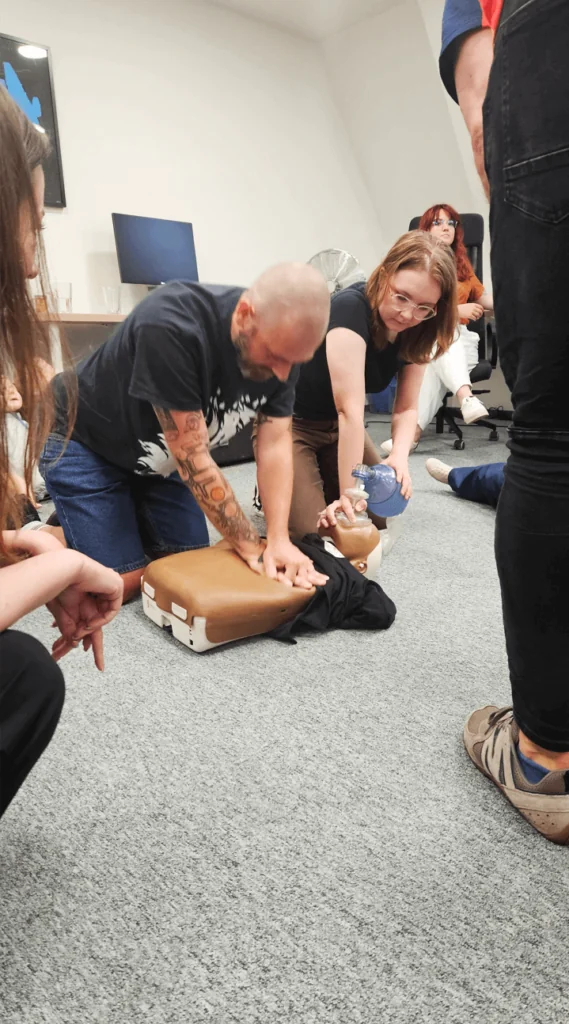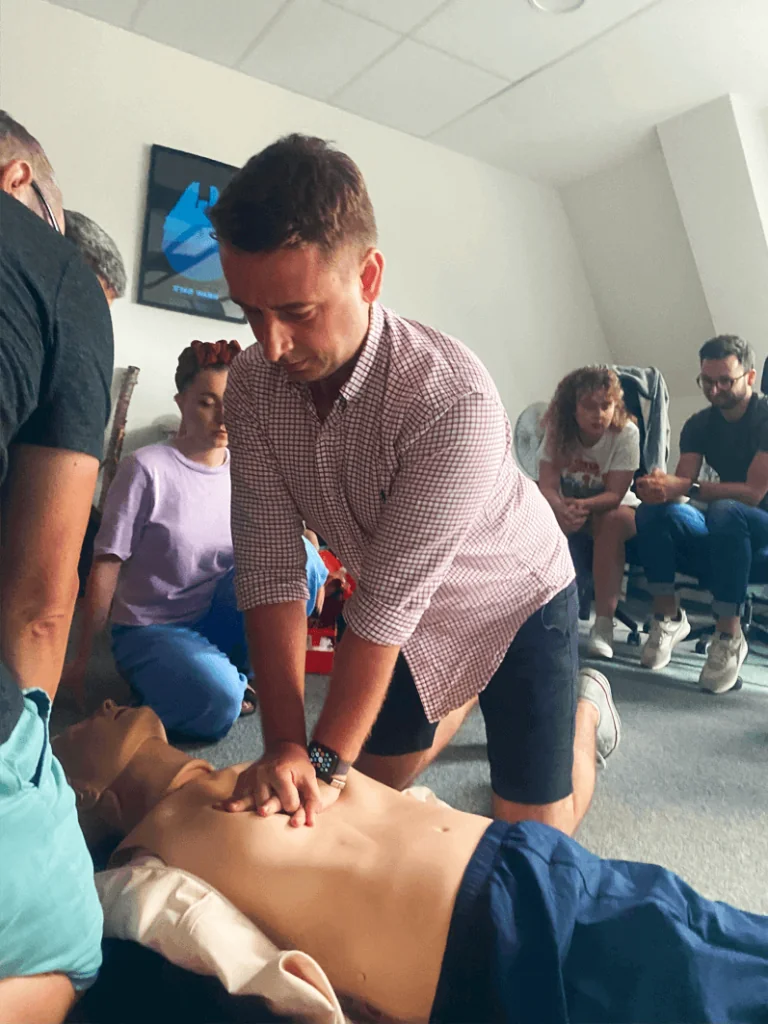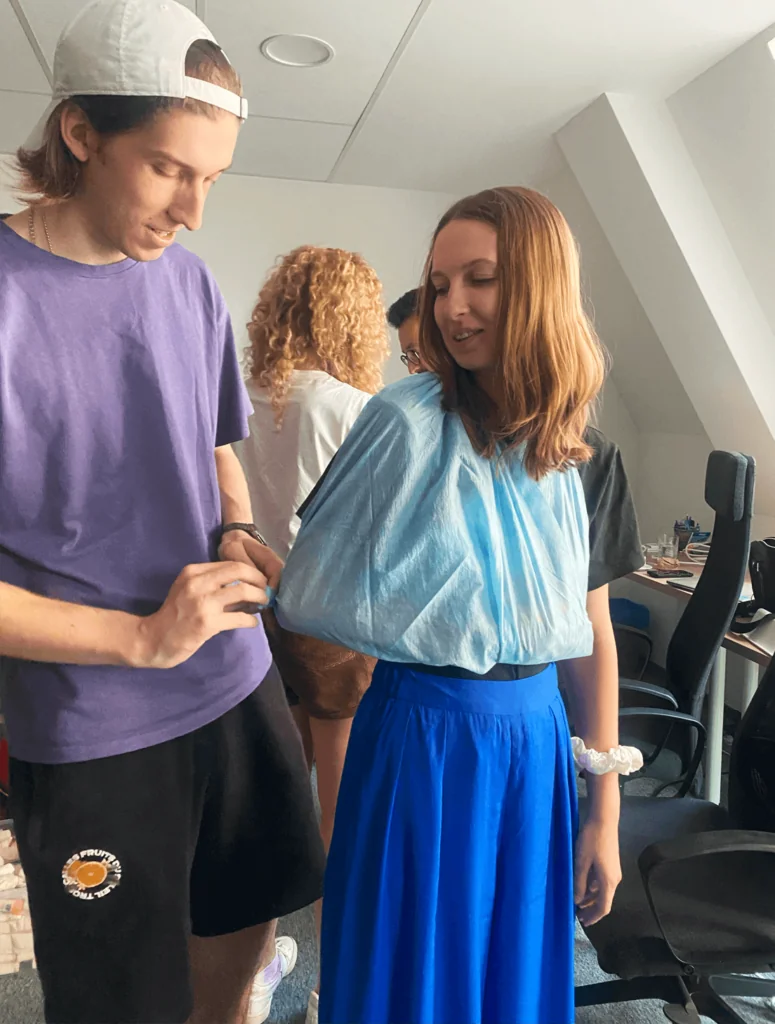In-depth first-aid training session

In our daily lives, we often encounter situations where immediate assistance is crucial. Whether it’s a minor injury or a more severe medical emergency, knowing how to provide first aid can make a significant difference.
That is why ambiscale recently participated in an in-depth first-aid training session. This event aimed to teach our team how to act swiftly and effectively in emergencies, both in the workplace and in private life.
What We Learned and Why It Matters
During the extensive 6-hour first aid training session, our team delved into various aspects of first aid, empowering us with a well-rounded understanding of how to respond to emergencies. The training covered several vital topics, each essential for effective and legally compliant first aid administration.
We began with the legal aspects of first aid, discussing the responsibilities and protections for those providing assistance. Safety was a significant focus. Our team now fully understands the importance of protecting oneself and others before offering help. This step is vital to prevent further harm and ensure the first responder can effectively assist without becoming an additional victim.
We learned algorithms for action, providing a structured approach to assessing and managing various emergencies. These step-by-step guidelines are designed to instill confidence in our ability to provide help correctly amidst the chaos of an emergency.
Cardiopulmonary Resuscitation
The training included detailed instructions on CPR (Cardiopulmonary Resuscitation) for adults, trauma victims, and visibly pregnant women. Each scenario requires specific techniques and considerations, highlighting the importance of tailored responses to increase the chances of survival and reduce complications. Additionally, the session covered CPR for children and infants, recognizing that young patients need different approaches due to their anatomical and physiological differences. This knowledge is essential for environments where children are present.
We also practiced using an AED (Automated External Defibrillator), a crucial device in reviving individuals experiencing cardiac arrest. Familiarity with this equipment can dramatically improve outcomes in such emergencies.
Choking, first aid kit, and pressure dressings
Another component dealt with choking incidents, teaching us how to clear airways in adults and children effectively. We reviewed the contents of a first aid kit, ensuring we knew how to use each item correctly. A well-stocked and organized first aid kit is essential, providing us with a sense of security and enabling immediate and effective treatment.
Finally, we learned how to tie triangular bandages properly, which are versatile tools for treating injuries. Our team also focused on applying pressure dressings to control bleeding and stabilize wounds. Knowing how to use these dressings effectively is crucial in preventing excessive blood loss and reducing the risk of infection.
A Vital Lesson in First Aid
This first-aid training was an invaluable experience, equipping us with essential skills and knowledge to handle a wide range of medical situations. It highlighted the need to regularly update our knowledge and skills as first aid guidelines evolve every few years. By staying informed and practicing, we can continue to ensure a safe and supportive environment for everyone.
Investing in first aid training is not just a professional responsibility. It is a personal commitment to the well-being of those around us. Let’s remember the importance of these skills and strive to keep our knowledge current when it matters most.






